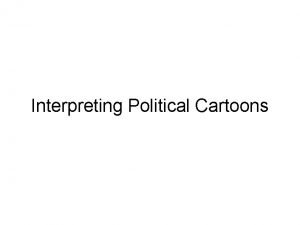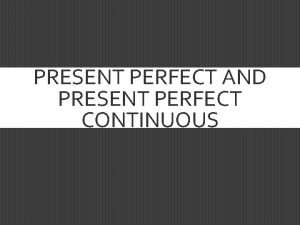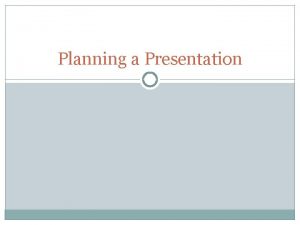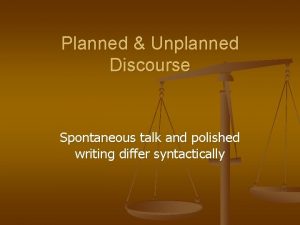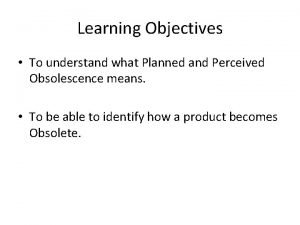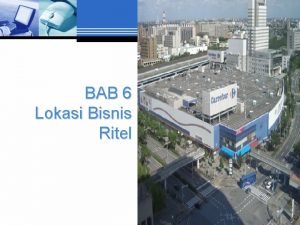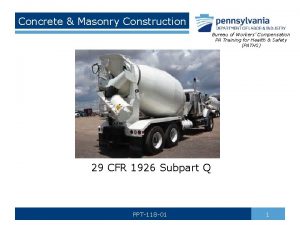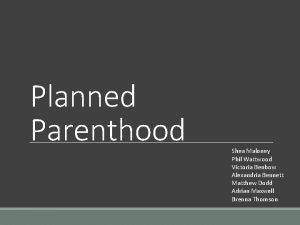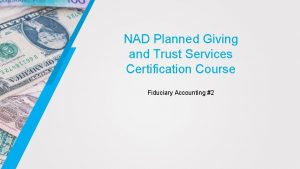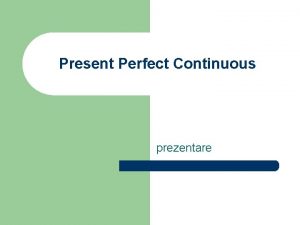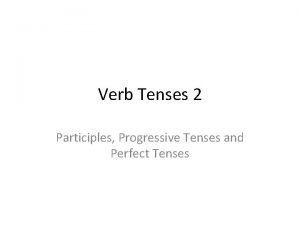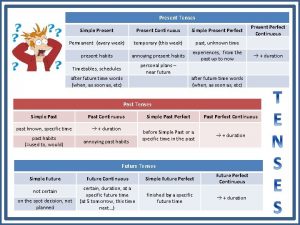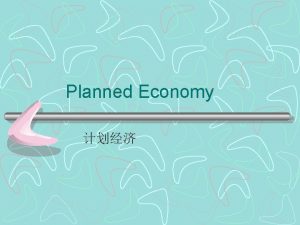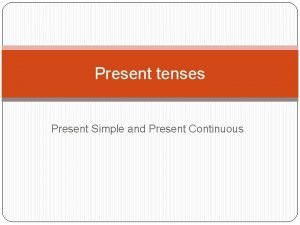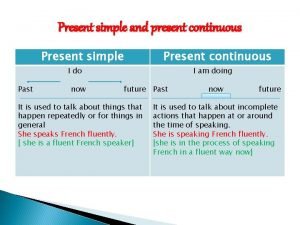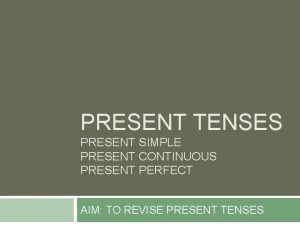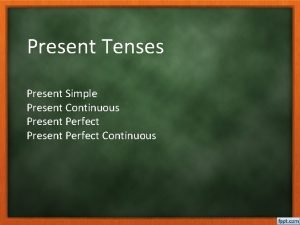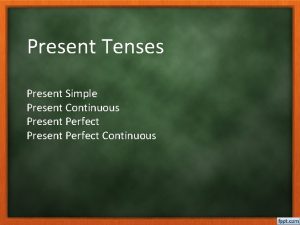Water Supply Study Present and Planned Water Supply















- Slides: 15

Water Supply Study Present and Planned Water Supply • Operational (2001) spring water bottling plant, with groundwater extraction rates approximating 125 gpm. • Planned groundwater extraction of up to 400 gpm. • Concerns about impacts to nearby water bodies.

Critical Prediction Calculate changes in Surface. Water Flows, Wetland Lake Levels from Constant Production of 400 gpm

Regional Model Design Selected Code MODFLOW 2000 Model Summary Study Area 4 layers Conductivity zones derived from regional/local geologic studies Variable recharge derived from published regression analysis

Local Model Area Groundwater Flow Pumping Center Impoundment Spring Outfall Stream

Shortcomings in Problem Formulation Modeling Tool – Use of River Package • Inability to realistically represent changes in streams, wetlands, and lakes. • Inability to explicitly represent the impoundment-overflow

Stream Impoundment Culvert Discharge Stream

Revised Problem Formulation • Digitized stream intersections and topo maps to assign MODFLOW Drain/River - revised during calibration. • Impoundment and nearby lakes represented with Lake Package (Merritt and Konikow, 2000); outflow from impoundment explicitly modeled. • Four wetlands with standing water modeled with Lake Package to explicitly simulate wetland water levels. • Stream simulated using MODFLOW Drain Package plus Impoundment outflow. • Regional river comprises down gradient drainage center.

Model Calibration Strategy • Steady-state calibration to water levels in 48 wells, baseflow in five creeks, and lake levels in five lakes. • Transient calibration to drawdowns from long-term (72 hour) pumping test - one dozen wells with time-series drawdown data • Prior information used to establish total transmissivity as ‘soft’ information during steady-state calibration • Approx. 40 parameters – step-wise reduction using tied/untied parameters as calibration progressed • PEST used in parallel across four 1. 8 GHz processors

PEST Pre-Post Processing Advantages over GUI or ‘prompt’ Execution • Ability to assess progress with every run • Ability to re-parameterize (tie, hold, transform, scale, prior, regularize) model without ‘rebuild’ • Ability to alter run type with one (or two) quick Control File modifications – Forward run, Estimation, Regularization, and Prediction

goto 20 c Open(1, file='MICHIGAN_No_Reaches. riv') Open(2, file='Michigan_reaches. riv') MODFLOW 2000 headers Read(1, *) nriv, idum Write(2, '(2 I 10)') nriv, idum Read(1, *) nriv Write(2, *) nriv Lay, Row, Col Do n=1, nriv Read(1, *) k, i, j, stage, cond, rbot Write(2, 2) k, i, j, stage, cond*10, rbot, iriv_rch(j, i) End do Close(1) Close(2) Batch and Post-Processing Batch File REM File Management del headsave. hds copy mich_fin. hds headsave. hds del mich_fin. ddn del calibration. hds REM Run array multiplers cond_mult rech_mult REM Run custom MF 2 K Lake Package cust_lak 3 <modflowq. in REM get the water level target data targpest REM get the flux target data flux_targets copy mich_fin. hds calibration. hds REM Check for water above land surface wl_above_ls c c c Post-Processor Open(1, file='MICHIGAN_No_Reaches. drn') Open(2, file='Michigan_reaches. drn') MODFLOW 2000 headers Read(1, *) nriv, idum Write(2, '(2 I 10)') nriv, idum Read(1, *) nriv Write(2, *) nriv Do n=1, nriv Lay, Row, Col Read(1, *) k, i, j, rbot, cond Write(2, 3) k, i, j, rbot, cond, idrn_rch(j, i) End do Close(1) Close(2) 20 Continue c==================================== c FORMAT STATEMENTS c==================================== 1 Format(4 I 11, F 21. 0) 2 Format(3 I 10, F 10. 3, E 10. 3, F 10. 3, I 10) 3 Format(3 I 10, F 10. 3, E 10. 3, I 10) c==================================== c END OF PROGRAM c==================================== STOP 'Normal Exit' END

Calibration Results – SS Baseflows WL Sum of Squares (PHI) = Count = Mean Residual = Mean Absolute Residual = St. Dev of the residuals = Range = St. Dev/Range = Water Levels ~ 115 ft 2 48 wells - 0. 2 ft 1. 1 ft 1. 5 ft 63 ft ~ 2. 25%

Calibration Results – Transient Drawdowns

Predictive Analysis Problem Formulation and Execution • Reformulate the PEST calibration control file to estimate the max and min baseflow depletions in stream, while maintaining calibration – i. e. establish the range of uncertainty • Typically the increment added to the calibration objective function (Fmin + d) is about 5% of Fmin. For our analysis, this was raised by 50%

Predictive Analysis Present and Planned Water Supply • With total planned groundwater extraction of 400 gpm. -Predicted stream depletion at regional river: 400 gpm -Depletion of interest stream: small but measurable* -Changes in wetland water levels: small but measurable* The calculated upper- and lower-bound estimates of the change in flow at the stream are on the order of five percent (above or below) of the ‘most likely’ estimated change. *This is consistent with the observation that wetland water levels, and the areal extent of wetlands based on aerial photographs were not significantly affected by the construction of the impoundment.

Salient Point(s) • Problem formulation is key to the ‘integrity’ of the predictive analysis – the selected code must be designed to simulate the type of prediction of interest. • The fairly tight bounds on the prediction may also arise from the ability of models to predict changes far better than absolute numbers.
 A wise economist asks a question analysis
A wise economist asks a question analysis Water and water and water water
Water and water and water water Present simple present continuous and present perfect
Present simple present continuous and present perfect Planned presentation
Planned presentation Planned and unplanned discourse
Planned and unplanned discourse Planned and perceived obsolescence
Planned and perceived obsolescence Keuntungan bagi peritel dengan lokasi yang berdiri sendiri
Keuntungan bagi peritel dengan lokasi yang berdiri sendiri Lift slab operations must be designed and planned by
Lift slab operations must be designed and planned by Shea maloney
Shea maloney Planned giving and trust services
Planned giving and trust services Planned giving and trust services
Planned giving and trust services I write a letter now past continuous tense
I write a letter now past continuous tense Present simple present continuous present perfect
Present simple present continuous present perfect Present perfect simple schema
Present perfect simple schema Relative clause noredink
Relative clause noredink Do or does use
Do or does use
